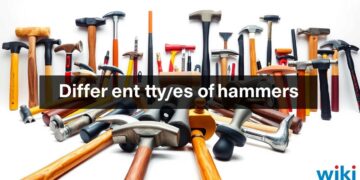Did you know that using the right equipment in warehouses can really boost efficiency? In fact, the right tools can make operations up to 30% better! Carts are key for moving goods, picking orders, and more. Picking the right industrial carts is crucial for your warehouse’s success.
Choosing the right cart can be tough with so many options. We’re here to help you find the best cart for your needs. We’ll look at different types of carts that can improve your warehouse. From heavy-duty to compact designs, we’ll show you the top choices to boost your warehouse’s efficiency.
Key Takeaways
- Understanding the different types of carts available for warehouse use.
- Identifying the best cart for specific warehouse tasks.
- Recognizing the importance of choosing the right cart for efficiency.
- Learning about the features and benefits of various industrial carts.
- Discovering how to optimize warehouse operations with the right equipment.
Introduction to Warehouse Carts
The right warehouse cart can make work better and safer. Warehouse carts, like utility and push carts, help move goods and materials. They are key in warehouses and factories.
Importance of Carts in Warehousing
Carts are very important in warehouses. They help cut down on manual work, which lowers injury risk and boosts efficiency. Utility carts are great for many tasks, like carrying tools or moving stock.
Using carts makes warehouses run smoother. It helps manage stock and meet orders faster. This makes customers happier and helps businesses stay ahead.
Key Features to Look For
When picking a warehouse cart, look at a few things. Check the cart’s weight it can carry, how strong it is, and how easy it is to move. Push carts are perfect for tight spaces because they are easy to push.
| Cart Type | Load Capacity | Maneuverability |
|---|---|---|
| Utility Carts | Up to 500 lbs | High |
| Push Carts | Up to 300 lbs | Very High |
| Platform Carts | Up to 1000 lbs | Medium |
Types of Carts
The right cart can really help a warehouse run better. There are many types to pick from. Each one is made for different jobs, like moving things or picking orders.
Overview of Different Carts
Warehouses use many carts, like flatbed trolleys and order picking trolleys. Each one is made for a special task and place.
Flatbed trolleys are great for moving big or heavy items. Order picking trolleys help with picking and packing. They have special spots and are easy to use.
Benefits of Using Carts in a Warehouse
Carts make warehouses work better. They save money and make things safer. They help move and organize goods, making work flow smoother.
A warehouse expert says, “Carts are key for modern warehouses. They make work easier and safer for workers.”
“The right carts can really boost productivity and cut down on worker tiredness.”
| Cart Type | Primary Use | Benefits |
|---|---|---|
| Flatbed Trolleys | Transporting heavy or bulky items | Durable, versatile |
| Order Picking Trolleys | Facilitating order picking and packing | Ergonomic, organized |
| Shelf Trolleys | Multi-level storage and display | Space-saving, flexible |
Knowing about different carts and how to use them helps warehouses work better. This leads to more done and less spent.
Hand Trucks
Hand trucks are key for moving heavy or bulky items in warehouses. They are also known as hand carts or dolly carts. They make moving goods easier and more efficient.
Design and Usage
Hand trucks are L-shaped and stand upright. They have two wheels at the bottom. This design helps them support heavy loads like boxes, bags, or big appliances.
Using hand trucks is simple. Just place the load against the upright section, secure it if needed, and push or pull it to where you want.
Ideal Scenarios for Hand Trucks
Hand trucks are great for moving heavy or bulky items short to medium distances. They’re perfect for tight spaces or when the load is too heavy for one person. Using a hand truck reduces staff strain and injury risk.
They’re also useful in different warehouse tasks. From receiving and storing goods to preparing orders for shipment. Their versatility makes them a valuable asset for any warehouse aiming to improve efficiency.
Platform Carts
Platform carts are very useful in many warehouses. They can carry many items at once. Their big surface area fits different kinds of goods well.
Versatility and Capabilities
Platform carts are very strong. They can handle heavy loads. They are made from materials like steel or heavy-duty plastic.
They come in different sizes for different needs. You can use them for small or big items. Many have wheels for easy moving, even when full.

Best Practices for Use
To use platform carts well, follow some tips. Make sure the cart fits the load you plan to carry. Too much weight can cause accidents and damage.
Keep the cart in good shape. Check the wheels and frame often. Fix any damage quickly. Load the cart right to keep it balanced.
Key Considerations for Platform Carts
| Feature | Description | Benefit |
|---|---|---|
| Durable Construction | Made from robust materials like steel or heavy-duty plastic | Withstands heavy loads and lasts longer |
| Variety of Sizes | Available in different dimensions to suit various needs | Flexible for different applications and items |
| Maneuverability | Equipped with wheels for smooth movement | Eases transportation of goods across the warehouse |
Utility Carts
Utility carts are key in warehouses, offering flexibility and efficiency. They adapt to many tasks, making them vital in many settings.
Features and Functionality
Utility carts are flexible and easy to use. They come in different shapes, sizes, and materials. This lets them fit specific tasks well.
They often have shelves or compartments for organizing. They are built to last and easy to move around. This makes them handy for many tasks.
Utility carts can also be customized for your needs. Some have adjustable shelves or parts that can be removed. This makes them very versatile.
Common Applications in Warehousing
Utility carts are used for many tasks in warehouses. They help with transporting goods and supply storage. They are also great for order picking and assembly line work.
They make work more efficient and save on labor costs. By making it easy to move materials, they help improve productivity.
Shelf Carts
Shelf carts are key for organizing and moving small items in warehouses. They offer many levels of storage. This makes it simple to keep things tidy and easy to find.

Advantages of Multi-Level Storage
Shelf carts are great because they use space well. They let warehouses store more without taking up more floor space. They keep the floor clear, making it safer and reducing tripping risks. Also, they help sort items, making them easier to find and use.
Using shelf carts also helps with managing inventory. Items are stored at different levels, making it simpler to keep track of them. This is especially helpful for places with lots of small or fragile items.
When to Use Shelf Carts
Shelf carts are perfect for warehouses with small or fragile items. They’re great for moving items short to medium distances. In assembly lines or packaging areas, they help supply parts, making production smoother.
They’re also very useful during inventory checks or stock counts. Shelf carts help move items to places for counting. This makes the process faster and more efficient.
Pallet Carts
Pallet carts are key in the warehousing world. They help manage palletized goods. This makes them very important in places that often deal with these products.
Purpose and Design
Pallet carts have forks that slide under pallets. This makes lifting and moving pallets easy. It helps workers avoid injuries and work faster.
These carts are built to last in busy warehouses. Their strong frames and materials make them reliable for moving pallets.
Optimizing Pallet Handling
Pallet carts make moving pallets more efficient. They help warehouses work better and faster. This improves how things get done in the warehouse.
Experts say the right pallet cart can cut down on labor costs and make the warehouse safer. This shows how important it is to pick the right cart for your needs.
To get the most out of pallet carts, choose one that fits your warehouse well. Think about how much it can hold, how easy it is to move, and how long it will last.
Comparison Chart of Cart Types
A comparison chart of cart types can help you choose the right one for your warehouse. It shows the main features and specs of each cart. This makes it easy to compare and choose wisely.
Quick Reference for Selection
When picking a cart, think about what your warehouse needs. This chart is a quick guide to different carts. It shows their special features and what they can do.
| Cart Type | Load Capacity | Maneuverability | Storage Capacity |
|---|---|---|---|
| Hand Trucks | Up to 600 lbs | Excellent | Limited |
| Platform Carts | Up to 2000 lbs | Good | Moderate |
| Utility Carts | Up to 1000 lbs | Very Good | High |
| Shelf Carts | Up to 800 lbs | Good | High |
| Pallet Carts | Up to 4000 lbs | Fair | Very High |
Key Specifications of Each Type
Knowing the key specs of each cart is important. The chart shows load capacity, maneuverability, and storage. This helps you find the best cart for your warehouse.
Looking at each cart’s unique features helps improve your warehouse. Whether you need high load capacity, easy movement, or lots of storage, the chart helps you choose.
Factors to Consider When Choosing Carts
The right cart for you depends on a few key things. When picking a cart, look at several important factors. This ensures it fits your warehouse needs well.
Load Capacity and Material
First, think about the load capacity of the cart. You must figure out the average weight of items you’ll move. Then, pick a cart that can safely carry that weight.
The material of the cart is also key. Carts can be made from steel, aluminum, or plastic. Each material has its own strengths, like durability and weight.
If you’re moving heavy items, a strong steel cart is best. For lighter loads or tight spaces, aluminum might be better.
Maneuverability Features
Another important thing is the maneuverability of the cart. Look at the wheels or casters. They affect how easy the cart is to move.
Some carts have fixed wheels, while others have swivel casters. These make moving around easier.
Think about your warehouse’s layout when choosing. Carts with high-quality casters help navigate tight spots well.
By considering these factors, you can find a cart that fits your needs now and in the future.
Maintenance and Care for Warehouse Carts
Keeping warehouse carts in good shape is key. It’s about safety and making work easier. Making sure your carts work well is important for your warehouse’s smooth running.
Routine Maintenance Tips
To keep carts in top shape, regular care is needed. Here are some tips:
- Regular Inspections: Look for wear and tear, like loose wheels or broken frames.
- Lubrication: Make sure moving parts are well-lubricated to avoid friction and wear.
- Cleaning: Keep carts clean to avoid damage and keep things hygienic.
- Proper Storage: Store carts in a dry, safe place when not in use to prevent damage.
By following these easy maintenance tips, you can make your warehouse carts last longer. They will keep working well for you.
Signs It’s Time to Replace a Cart
Even with regular care, sometimes a cart needs to be replaced. Here are some signs to watch for:
- Significant Wear and Tear: Look for a cart with a badly damaged frame or wheels that don’t work right.
- Frequent Breakdowns: If a cart keeps breaking down, it might be cheaper to replace it than fix it all the time.
- Safety Concerns: If a cart is a safety risk, it’s time to think about replacing it.
Replacing a cart when needed is important for a safe and efficient work area.
Conclusion
Choosing the right warehouse cart is key to better work and safety. We’ve looked at different carts and their benefits. Each one is good for something special.
Essential Cart Types for Your Warehouse
There are five main cart types: hand trucks, platform carts, utility carts, shelf carts, and pallet carts. Each meets different needs in a warehouse. Knowing what each does helps make your warehouse better.
Maximizing Cart Effectiveness
To use carts well, think about their load, material, and how easy they are to move. Keeping them in good shape is also important. It helps them last longer and keeps everyone safe.
Choosing the right cart and taking care of it can really help your warehouse. Using carts right is a simple way to make your work better and safer.



















